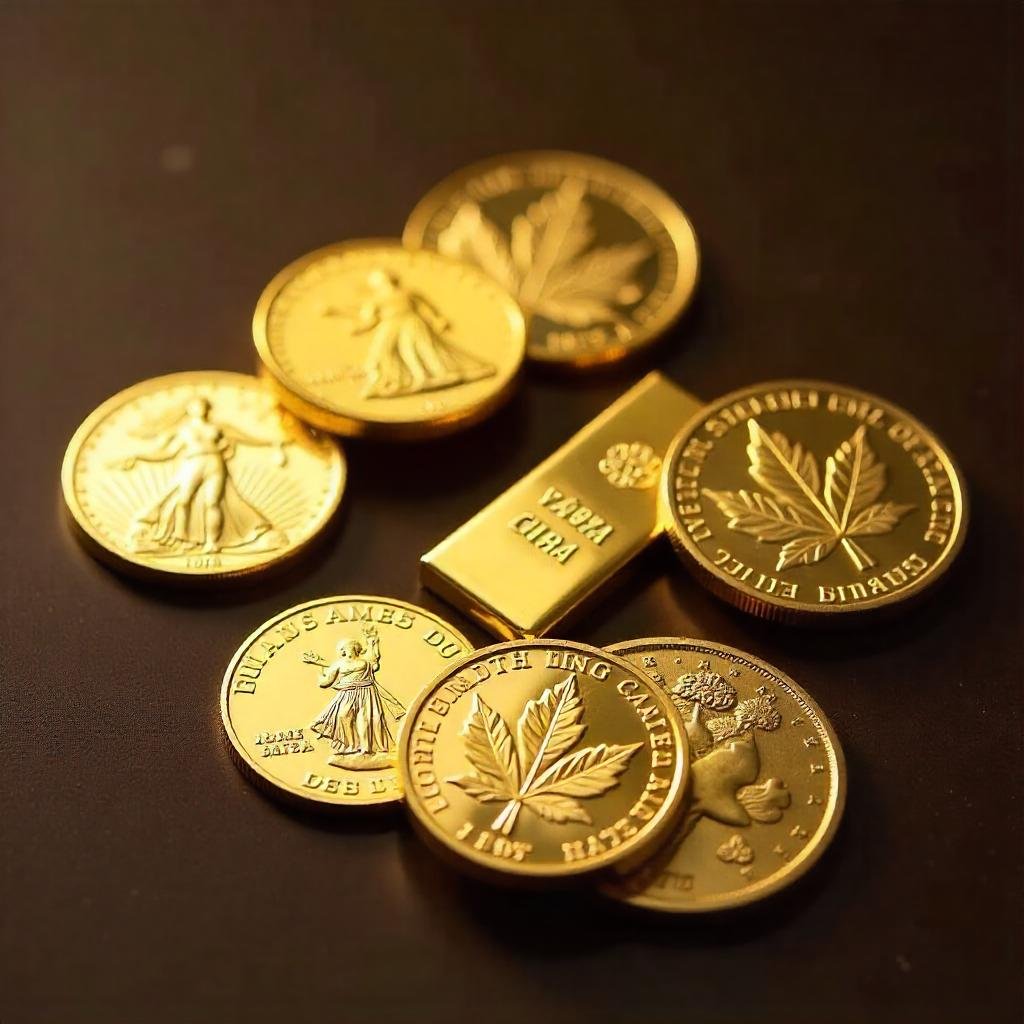In the world of finance, investors frequently seek refuge in assets that can protect their wealth during times of economic instability, or market downturns. These are known as safe haven assets. And gold consistently ranks as one of the most prominent and historically validated choices.
Summary
The Core Concept of a Safe Haven Asset
A safe haven asset is a financial instrument that is expected to retain or even gain value during periods of market volatility, economic recession, or geopolitical uncertainty.
Unlike typical investments that might fluctuate significantly with broader market conditions, safe havens are sought for their ability to preserve capital and provide stability when other assets are faltering. They are characterized by a low or negative correlation with traditional financial markets like stocks and bonds during times of stress.
Gold is almost universally cited as a prime example of a safe haven asset due to several intrinsic qualities. Its millennia-old history as a store of value, its tangibility, and its universal acceptance as a medium of exchange contribute to its appeal. Unlike fiat currencies, which can be devalued by government policy or inflation, gold’s supply is limited, and its value is not tied to the promise of any single entity. This intrinsic worth and independence from the banking system make it a reliable asset when trust in conventional financial systems declines.
Beyond Gold: Other Safe Haven Assets and Their Popularity
Gold is certainly not the sole safe haven asset, though it often appears to be the most popular, particularly among individual investors and central banks. Its popularity stems from its unparalleled history, liquidity, and universal acceptance. While other assets serve similar functions, they may come with their own specific nuances or limitations.
Other assets currently considered safe havens, often by specific market participants or in particular contexts, include:
- Government Bonds: Particularly those issued by highly stable economies with strong credit ratings, such as U.S. Treasury bonds, German Bunds, or Swiss government bonds. These are considered safe due to their extremely low default risk – the issuing government is highly unlikely to fail to pay back its debt. Institutional investors often flock to these during crises.
- Certain Currencies: The U.S. Dollar (USD) is often considered a safe haven currency due to its status as the world’s primary reserve currency, the size and liquidity of the U.S. financial markets, and the perceived stability of the U.S. economy. The Japanese Yen (JPY) is another common safe haven, often appreciating during global market turmoil due to Japan’s status as a major creditor nation and its generally low interest rates. The Swiss Franc (CHF) is also a traditional safe haven, underpinned by Switzerland’s strong economy, political neutrality, and robust banking system.
- Defensive Stocks: These are shares of companies that tend to perform relatively well even during economic downturns because their products or services are essential regardless of the economic climate. Examples include utilities, consumer staples (food, household goods), and certain healthcare companies. While still equities, their lower volatility makes them “safer” within the stock market context.
- Cash: For very short-term uncertainty, simply holding cash can be considered a safe haven, as it avoids market fluctuations entirely. However, cash is susceptible to inflation, eroding its purchasing power over time.
Gold’s edge in popularity over some of these alternatives often comes down to its tangibility, its lack of counterparty risk (it’s not dependent on a government’s promise to pay or a company’s solvency), and its long-standing cultural and historical significance as wealth. While a bond is a promise, gold is the asset.

Assessing Gold’s Position as the Premier Safe Haven
While no asset is entirely immune to price fluctuations, gold is widely considered one of the most effective safe havens. Its ability to retain value when other assets falter is demonstrated through various historical periods.
For instance, during the 2008 Global Financial Crisis, as stock markets plummeted worldwide and major banks faced collapse, gold prices surged significantly. From its low in October 2008, gold rallied considerably into 2011, reaching then-record highs. Precisely, Gold reached nominal record highs (above $1,900/ounce) in 2011, having rallied considerably from its 2008 lows (which were around $700/ounce). This period vividly illustrated how investors and institutions alike turned to gold as a tangible store of wealth amid a crisis of confidence in the financial system.
Similarly, during the COVID-19 pandemic in 2020, as global markets experienced sharp declines and unprecedented uncertainty, gold once again demonstrated its safe-haven characteristics, initially dipping with broader asset sales but then recovering strongly to reach new all-time highs. After an initial dip in March 2020 (when it briefly fell below $1,500/ounce), gold recovered very strongly. It indeed surged to new all-time nominal highs, surpassing $2,000/ounce in August 2020.
The primary reasons gold stands out as a leading safe haven are:
- Tangibility and Intrinsic Value: Gold is a physical asset with inherent utility (jewelry, electronics) and historical value, unlike paper money or fiat digital forms that rely on trust in institutions. Because it cannot be printed or created at will, its scarcity is maintained.
- Lack of Counterparty Risk: Owning physical gold means there is no risk of a third party (like a bank or government) defaulting on a promise. The value of gold is not tied to the solvency of any single entity.
- Universal Acceptability and Liquidity: Gold is recognized and accepted as valuable worldwide, making it highly liquid. It can be readily bought and sold in large quantities across global markets.
- Hedge Against Inflation and Currency Devaluation: Gold historically preserves purchasing power when fiat currencies lose value due to inflation or excessive money printing. It also often rises when major currencies, particularly the U.S. Dollar, weaken.
- Negative Correlation with Risk Assets: Gold often moves inversely to stocks and other riskier assets. This negative correlation provides diversification benefits to a portfolio, helping to cushion overall losses during market downturns.



Gold’s Vulnerability: Can a Safe Haven Crash?
While gold is renowned for its stability, it is crucial to maintain an objective and factual perspective: gold can indeed experience significant price corrections or “crashes,” as no asset is entirely impervious to market dynamics. Its price is determined by supply and demand, and shifts in these fundamentals or investor sentiment can lead to notable declines.
Historical examples clearly illustrate this:
- The 1980s Bear Market: After reaching a then-record high of around $850 per ounce in January 1980, largely fueled by inflation concerns and geopolitical tensions, gold entered a prolonged bear market. Over the next two decades, its price steadily declined, reaching a low of around $250 per ounce in 1999. This significant drop, often considered a “crash” from its peak, was primarily driven by falling inflation, rising real interest rates, and a strong U.S. dollar, which diminished gold’s appeal as a safe haven.
- The 2013-2014 Correction: Following a strong bull run that culminated in an all-time high above $1,900 per ounce in 2011 (driven by the 2008 financial crisis and subsequent quantitative easing), gold experienced a sharp correction of over 25% in 2013. This decline was largely attributed to expectations of the U.S. Federal Reserve tapering its quantitative easing program, signaling a potential shift towards higher interest rates and a stronger economy, which reduced the perceived need for gold as a hedge.
These examples demonstrate that while gold generally performs well during crises, it is not immune to market forces and can experience substantial downturns, particularly when the underlying economic conditions or investor sentiment shift away from a need for safe havens.
Gold Behavior During Major Crises Since 1929
Nevertheless, gold’s performance in global crises since the 1929 Great Depression has mostly solidified its safe haven status, though its reaction can vary depending on the crisis’s specific nature.
- The Great Depression (1929 onwards): In the immediate aftermath of the 1929 stock market crash, gold’s role was complicated by the gold standard. However, the U.S. government’s decision in 1934 to revalue gold from $20.67 to $35 per ounce effectively boosted its value in dollar terms, providing a significant gain for gold holders during a period of deflation and economic contraction. This illustrated gold’s ability to retain value when fiat currencies struggled.
- 1970s Stagflation: This decade saw high inflation and stagnant economic growth. With the end of the Bretton Woods fixed exchange rate system in 1971, gold’s price was no longer artificially controlled, it experienced a rapid ascent in value, demonstrating its effectiveness as an inflation hedge. From around $35 per ounce in 1971, it reached over $800 by 1980.
- Dot-Com Bubble Burst (2000-2002): While stocks declined sharply, gold began a new bull market. It saw significant gains as investors sought refuge from a faltering tech sector and subsequent economic downturn.
- Global Financial Crisis (2008): As detailed earlier, gold performed exceptionally well, it saw a substantial increase in value as trust in financial institutions dissolved and central banks initiated extensive stimulus programs. This crisis cemented gold’s modern safe-haven reputation.
- European Debt Crisis (early 2010s): Gold continued its strong performance, acting as a hedge against concerns about member state solvency.
- COVID-19 Pandemic (2020): After an initial liquidity-driven dip, gold quickly rebounded and surged to new all-time highs as the pandemic caused unprecedented global economic uncertainty and central banks injected massive liquidity into markets.
In summary, gold has consistently acted as a store of value and a counter-cyclical asset during most major crises since 1929. While not immune to short-term volatility, its long-term pattern of preserving or increasing value during pressure on traditional financial assets solidifies its place as a vital component in diversified portfolios amid uncertainty.
Valuing Physical Gold as a Safe Haven: Beyond Spot Price
When considering gold as a safe haven, the form in which it is held matters, as gold jewelry, coins, and bars do not always have the same value relative to the underlying gold content or the same effectiveness as a safe haven.
- Gold Bars (Bullion): These are generally considered the purest form of physical gold investment for safe haven purposes. Their value is almost entirely tied to the spot price of gold, with a relatively small premium for fabrication and dealer markup. They are preferred by discerning investors and institutions for their high purity and direct correlation to the market price of gold.
- Gold Coins: Investment-grade gold coins (e.g., American Gold Eagles, Canadian Gold Maple Leafs, Krugerrands) are high-purity gold coins whose value is primarily based on their gold content and not rarity. However, they typically carry a slightly higher premium over the spot price than large bars due to their smaller size, minting costs, and often legal tender status. While effective safe havens, their premium means one pays a bit more per ounce. Numismatic or collector coins, whose value is significantly influenced by rarity, historical significance, or aesthetic appeal rather than just gold content, are slightly less ideal as pure safe havens. Their value can be influenced by subjective factors and might not always move in direct correlation with the spot price of gold during periods of market stress. However, these coins retain a certain value derived from their collectible attributes, which is certainly not negligible.
- Gold Jewelry: While made of gold, jewelry is generally the least efficient form of gold for safe haven purposes. Its value is significantly influenced by craftsmanship, design, brand, gemstones, and fashion trends, often far exceeding the actual gold content. When selling jewelry, especially during a crisis, one typically receives only a fraction of the original purchase price, often based on the melt value of gold (i.e., its spot price minus purification cost.). The premium paid for aesthetic value is usually lost. Therefore, while jewelry possesses a certain tangible asset value owing to its gold content, design, and brand or gemstone inclusions, it does not serve as direct or efficient safe haven as bullion or investment-grade coins.
For a true safe haven, the focus is on the intrinsic value of the metal itself and its ease of liquidity close to the spot price, making bullion and investment coins superior choices over jewelry.



